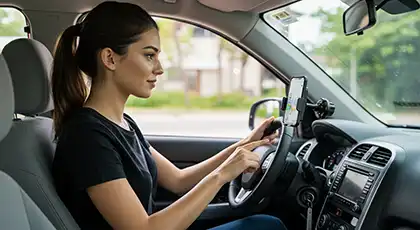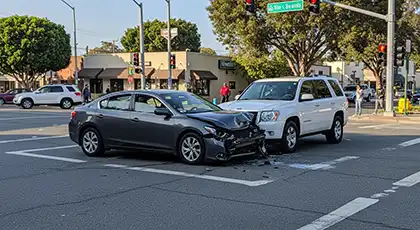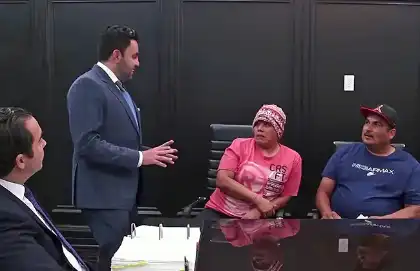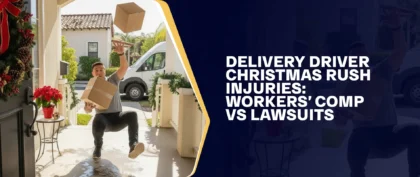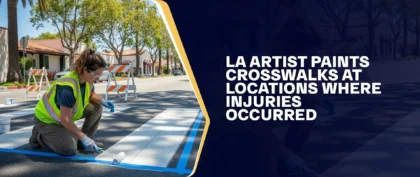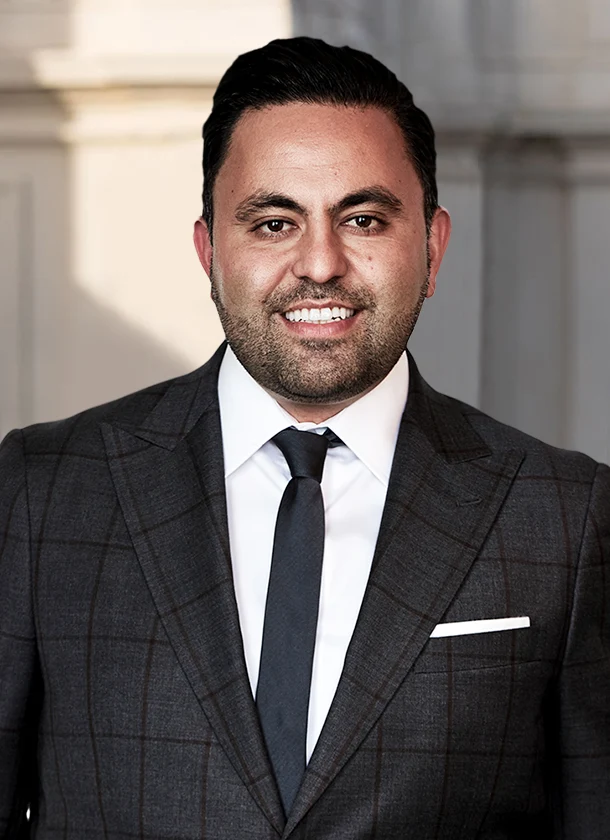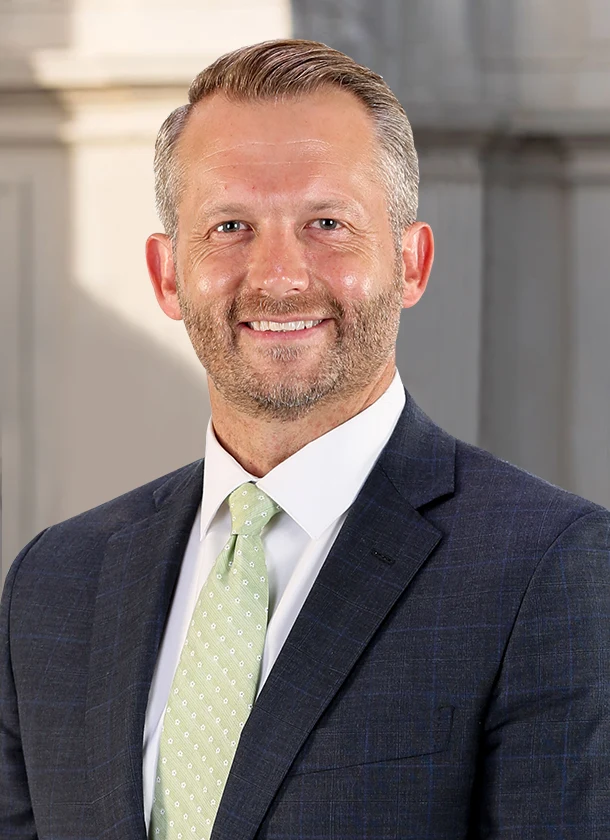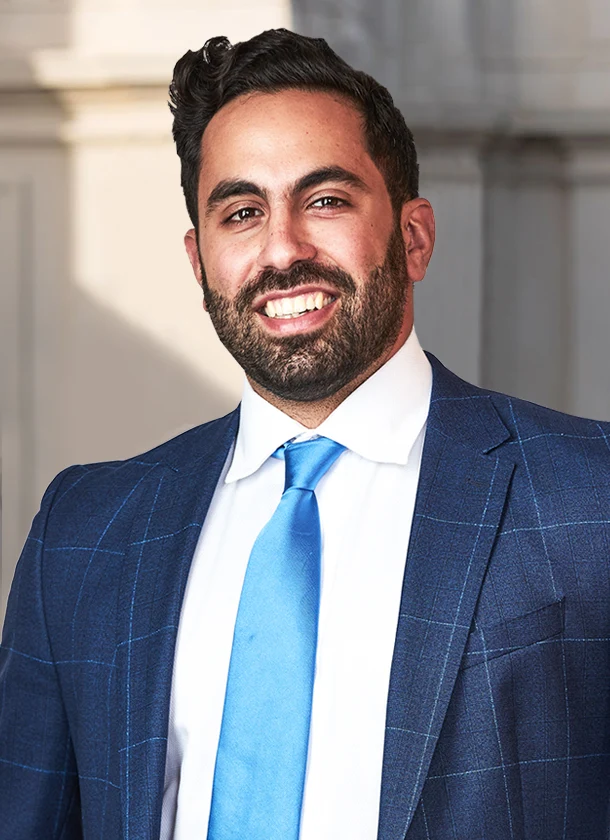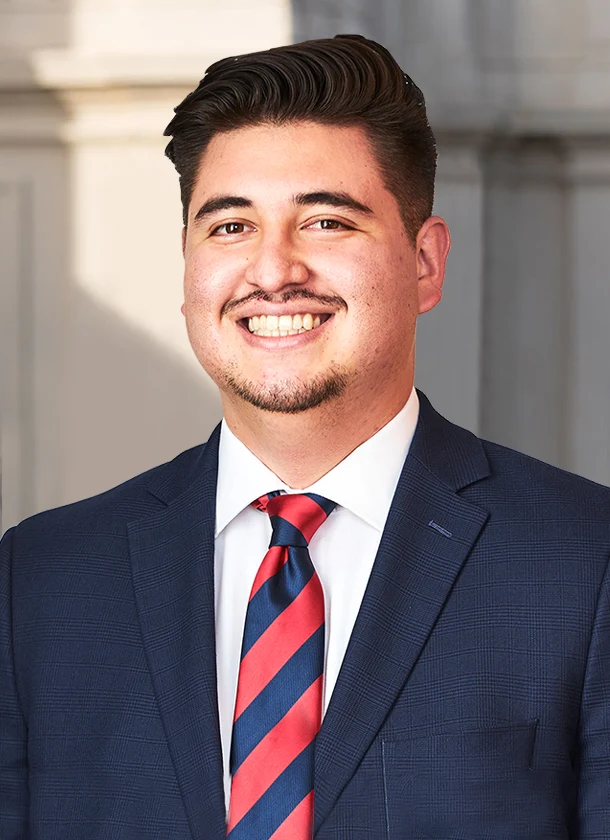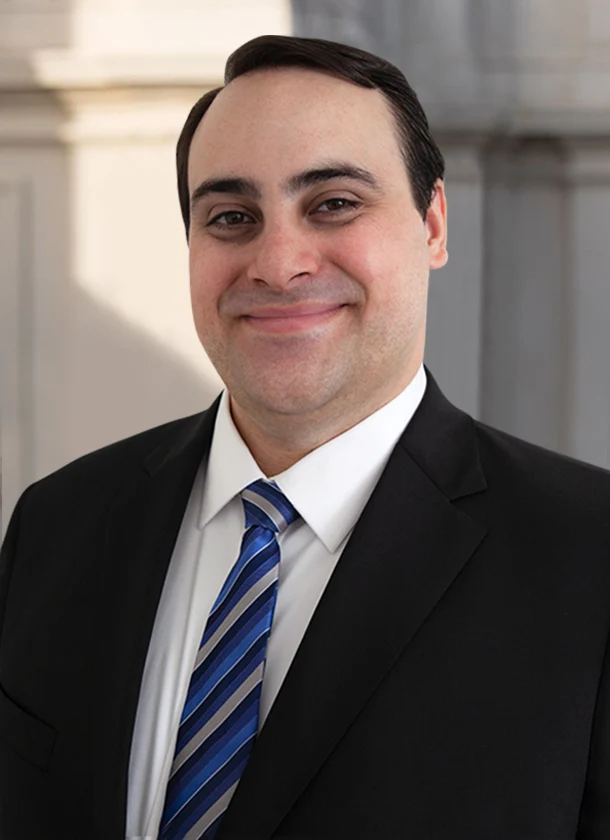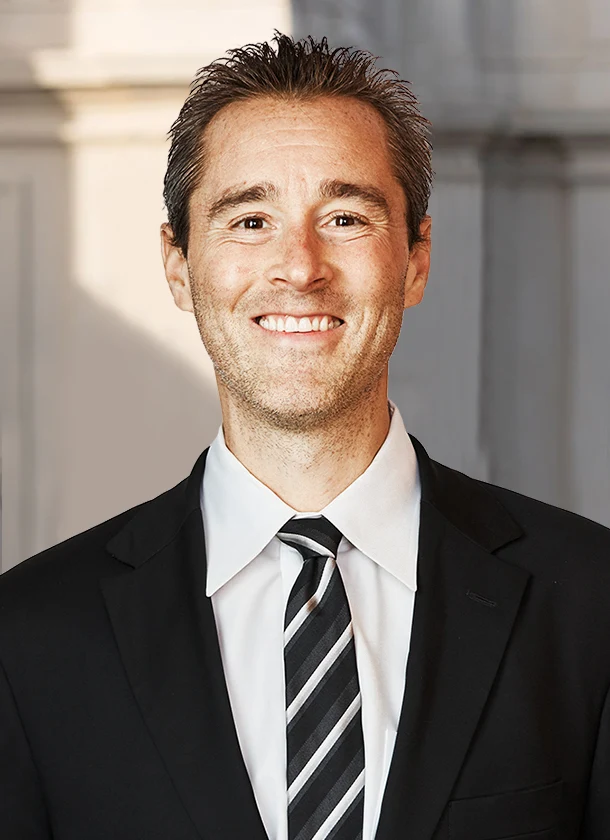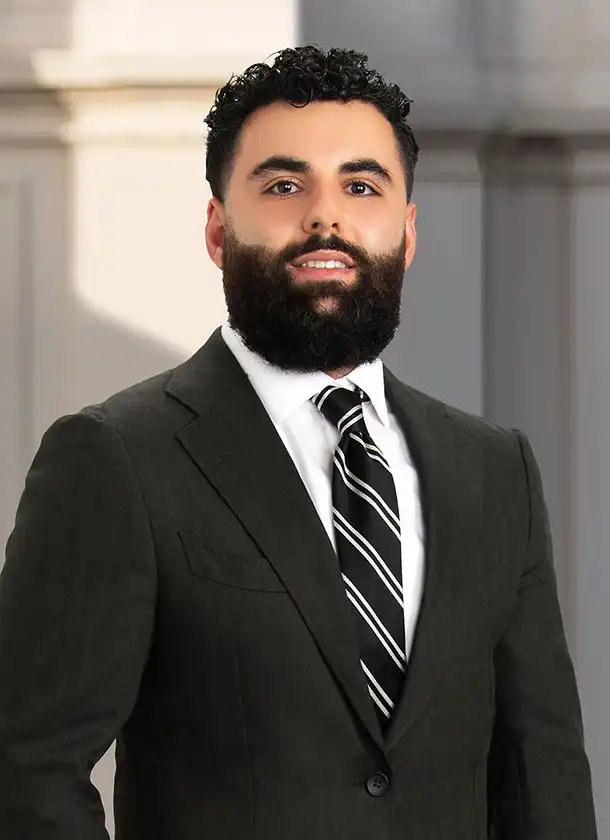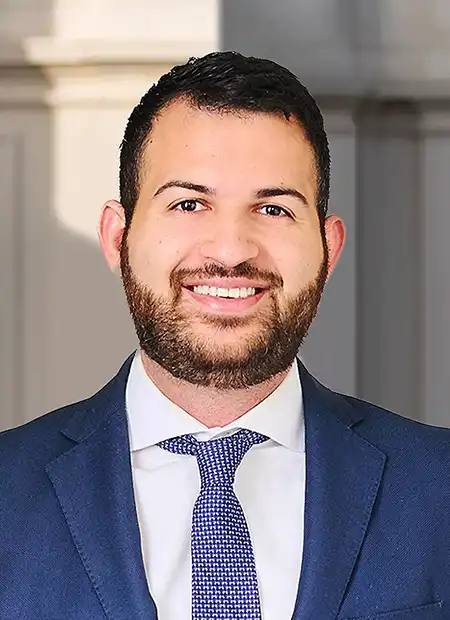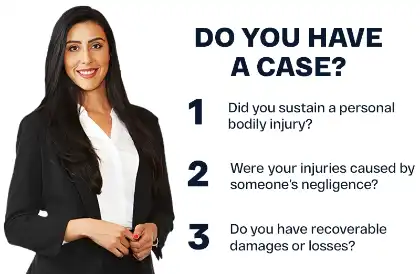Table of Contents
Picture this: you’re in the backseat of a Lyft or Uber, scrolling through your phone, when your driver crashes into another vehicle. After getting treated for your injuries, you wonder: Who covers your medical bills, lost wages, and other expenses? With over 22 million Uber and Lyft trips taken daily across the United States and thousands of rideshare accidents occurring yearly, this scenario is more common than many passengers realize.
Filing a claim with the rideshare company’s insurance is usually your first step after an accident. You can pursue legal action against the company to seek compensation, though this can be challenging. Uber and Lyft classify their drivers as independent contractors, which often limits their liability for accidents. Still, you may have grounds to hold them accountable if their negligence contributed to the crash.
If you have questions after an Uber or Lyft accident, our lawyers can provide clear answers. Our Uber and Lyft accident attorneys understand the nuances of liability, insurance, and passenger rights. Call (888) 488-1391 to schedule a free, confidential case assessment.
The Possibility Of Suing Uber Or Lyft For The Accident
If your Uber or Lyft driver gets into a crash, you might assume the rideshare company is automatically responsible. After all, they vetted and approved the driver, right? Unfortunately, it’s not that straightforward.
Under Proposition 22, California law classifies Uber and Lyft drivers as independent contractors rather than employees. This employment classification generally shields rideshare companies from “vicarious liability.” This is the legal principle that would otherwise hold employers responsible for their employees’ actions while on the job.
Vicarious liability is a legal concept that comes from common law, meaning it’s developed through court decisions rather than written laws. Proposition 22 doesn’t clearly state that it changes or removes this principle.
In California, courts assume the existing rules still apply if a law doesn’t explicitly say it’s altering common law. Judges won’t interpret a law as changing those rules unless the intent is clear. In short, since Prop. 22 doesn’t clearly eliminate vicarious liability, the courts will continue to decide whether companies like Uber or Lyft can be held responsible for the actions of their drivers.
There are specific circumstances where these companies may be directly liable. The most common grounds for rideshare company liability include negligent hiring, supervision, or retention of drivers. For example, if Uber or Lyft approved a driver despite a history of reckless driving or DUIs that would have appeared in a proper background check, they could be held legally responsible for putting passengers at risk.
Even when you can’t sue the rideshare company directly, their insurance policies may cover your damages. Uber and Lyft provide up to $1 million in liability coverage, but the coverage available depends on the driver’s status at the time of the accident and the victim’s actual damages. Understanding this tiered insurance system when pursuing compensation after a rideshare accident is critical.
Circumstances When Uber Or Lyft May Be To Blame
In some cases, Uber or Lyft may be liable for a rideshare accident if any of the following contributed to the incident:
Negligent Hiring, Supervision, Or Retention
Rideshare providers have certain obligations to screen their drivers for basic safety qualifications before allowing them to transport passengers. This duty includes conducting comprehensive background checks, reviewing driving records, and screening for histories of reckless driving, DUIs, or criminal behavior.
If a rideshare company fails in this essential screening process, it could be held liable for resulting accidents. Similarly, if Uber or Lyft receives multiple passenger complaints about a driver’s unsafe behavior but fails to investigate or remove them from the platform, they could be liable for negligent retention if it can be proven they had reason to know the driver posed a risk to passengers and other road users. In such situations, rideshare accident attorneys can assist victims in building a case.
Policies Encouraging Unsafe Driving
While Uber and Lyft publicly emphasize safety, their business model and incentive structures can sometimes push drivers toward risky behaviors. A 2018 study published in the Journal of Occupational and Environmental Medicine indicates that economic pressures and demanding work schedules in rideshare driving can contribute to unsafe driving practices. Some company policies and earning structures may contribute to risky driving behaviors, such as:
- Speeding to complete more trips in limited time windows.
- Ignoring traffic laws to avoid delays that might affect ratings or earnings.
- Driving while fatigued due to long hours needed to achieve profitable earnings.
- Accepting consecutive rides without adequate rest periods.
- Distracted driving while managing the app interface during trips.
Additionally, Uber and Lyft use performance-based incentives that reward drivers for hitting ride quotas. If a driver is close to earning a bonus or moving to a higher pay tier, they may push themselves past safe limits to meet company benchmarks.
If these policies contribute to unsafe driving that leads to an accident, Uber or Lyft could be held responsible. A personal injury lawyer can help investigate whether the company’s policies encouraged reckless driving behaviors.
App Malfunctions
Rideshare apps are the technological backbone of Lyft’s and Uber’s services, but software glitches, interface problems, navigation errors, and poor design can directly contribute to motor vehicle accidents. When app malfunctions cause crashes, rideshare companies may be liable under product liability laws if their technology proves unreasonably dangerous or defective.
Real-world examples of potentially dangerous app issues include:
- Navigation systems direct drivers the wrong way down one-way streets.
- The app interface requires excessive attention that diverts drivers’ eyes from the road.
- Sudden app crashes distract drivers at critical moments.
- Routing algorithms direct drivers into prohibited areas, like bus lanes or construction zones.
- Inaccurate pickup location pins cause dangerous stopping or U-turns in traffic.
When such app malfunctions contribute to accidents or injuries, consulting rideshare accident attorneys can help in seeking fair compensation under the law and holding the responsible parties accountable.
Understanding Rideshare Insurance
Understanding the complex insurance coverage system can be important when pursuing compensation if you’ve suffered injuries in a traffic accident involving an Uber or Lyft vehicle. Rideshare companies maintain insurance policies that cover drivers, passengers, and third parties. Still, the available coverage changes dramatically depending on the driver’s status in the app during the crash.
Phase 0: The App Is Off
When a rideshare driver is not logged into the app, they’re considered a private individual. In this scenario, only the driver’s auto insurance applies if an accident occurs. Uber and Lyft provide no coverage during this phase, which means recovery may be limited to the driver’s personal policy limits.
It’s important to note that insurance requirements for rideshare companies can vary by state. Some states have enacted specific legislation requiring higher minimum coverage levels than others. For example, California requires rideshare companies to maintain $1 million in coverage during active rides, while some states may have lower requirements.
Phase 1: The App Is On, Waiting For A Ride Request
When drivers are logged into the app but haven’t yet accepted a ride, Uber and Lyft provide limited liability coverage. This “standby mode” coverage includes:
- $25,000 for property damage per accident.
- $50,000 for bodily injury per person.
- $100,000 for bodily injury per accident.
These amounts represent the minimum coverage, not the maximum you might need after a serious accident. It’s also worth noting that during this phase, the driver’s auto insurance is still considered the primary coverage, with rideshare insurance acting as supplemental.
Phase 2-3: En Route To Pickup Or Actively Transporting Passengers
The moment a driver accepts your ride request, and until the completion of your trip, the highest level of insurance coverage is available. During these active phases, Uber and Lyft provide their most comprehensive protection:
- $1 million in third-party liability coverage for injuries to passengers, other drivers, pedestrians, or property damage.
- Uninsured/underinsured motorist (UM/UIM) coverage up to $1 million, protecting you if another driver causes the accident but lacks adequate insurance.
- Contingent comprehensive and collision coverage for damage to the driver’s vehicle (subject to a deductible of $1,000-2,500).
Other Parties Who Could Be Accountable
Depending on the circumstances, multiple parties could share liability for a rideshare accident. Here are some of them:
The Uber/Lyft Driver
Despite rideshare operations’ complex corporate structure, the drivers often bear primary responsibility for accidents they cause. A rideshare driver may be legally liable if they engaged in negligent driving behaviors, such as:
- Reckless driving includes speeding, running stop signs or red lights, and aggressive behavior on the road.
- Distracted driving, such as texting, adjusting the app, or focusing on conversations rather than the road.
- Drowsy driving due to working excessive hours or multiple jobs without adequate rest.
- Impaired driving under the influence of alcohol, drugs, or medications.
Establishing driver negligence requires evidence like police reports, witness statements, and sometimes data from the rideshare app, which can show speeds, routes, and driver activity patterns. Remember that even when the driver is found liable, their auto insurance may deny claims if they didn’t have proper rideshare coverage. In cases involving multiple liable parties, a rideshare accident lawyer can help identify potentially responsible individuals and navigate the complexities of shared liability.
Another Negligent Driver
Many rideshare accidents are caused not by Uber or Lyft drivers but by other motorists on the road. When another driver’s negligence causes your rideshare accident, you may need to pursue a claim against their auto insurance policy. Common scenarios include:
- Another vehicle rear-ended your rideshare car.
- A driver ran a red light and struck your Uber or Lyft.
- Reckless drivers caused your rideshare driver to take evasive action, resulting in a crash.
In these cases, you would still be protected by Uber or Lyft’s uninsured/underinsured motorist coverage if the at-fault driver has insufficient insurance. Uber accident lawyers or attorneys who handle Lyft crashes can guide you through the claims process.
A Vehicle Manufacturer
Under product liability laws, auto manufacturers can be liable when defective vehicles or components contribute to accidents. For rideshare accidents involving vehicle defects, you may have grounds for claims against manufacturers if your accident involved:
- Brake failures that prevent proper stopping.
- Tire blowouts from manufacturing defects.
- Steering system malfunctions.
- Airbags that failed to deploy or deployed inappropriately.
- Fuel system defects lead to vehicle fires.
These cases are technically complex and often require expert engineering analysis to establish the connection between the defect and your injuries. A personal injury attorney with experience in automotive product liability can help determine whether this type of claim applies to your case.
A Maintenance Provider
While rideshare drivers bear primary responsibility for maintaining their vehicles, the repair shops and technicians who service these vehicles also have a professional duty to perform safe, competent work. When faulty repairs or negligent maintenance contribute to an accident, repair providers may share liability.
Examples of maintenance provider negligence include:
- Improperly performed brake repairs.
- Oil changes that damage engine components.
- Tire installations that fail to secure wheels properly.
- Safety inspections that miss critical mechanical issues.
- Using defective or inappropriate replacement parts.
These cases involve complex questions about the standard of care for automotive repairs and whether the maintenance issue directly caused the accident. Additionally, if Uber or Lyft knew or should have known about inadequate vehicle maintenance through their inspection processes, they might share responsibility for allowing unsafe vehicles to transport passengers.
A Government Entity
Dangerous road conditions, such as large potholes, missing guardrails, malfunctioning traffic signals, inadequate signage, or poorly designed intersections, can significantly contribute to rideshare accidents. When these factors play a role, the government agencies responsible for road design, construction, or maintenance may bear partial liability.
However, claims against government entities come with unique challenges:
- Shorter filing deadlines (often as little as 6 months from the accident date).
- Special administrative claim requirements.
- Specific notice provisions.
- Sovereign immunity protections that can limit damages.
For example, if your Lyft driver crashed because a traffic light malfunctioned, you must file a claim with the responsible municipal department, typically within 6 months, before pursuing a lawsuit. These claims require prompt investigation and documentation of the dangerous condition, making early legal consultation crucial. Consulting a car accident claims lawyer can help you take the proper steps to protect your right to compensation, taking into account any deadlines that might apply.
Common Challenges In Suing Uber Or Lyft
While rideshare services provide insurance coverage, claiming damages can be challenging. Here are some of the biggest challenges accident victims encounter when trying to hold rideshare companies accountable:
Dealing With Insurance Companies
Insurance companies follow certain procedures that may impact how and when you receive compensation. Some challenges you might encounter include:
- Early Settlement Offers — Insurers may present settlement options quickly, sometimes before the full extent of your injuries is clear or before you’ve had legal or medical guidance. These may come with requests to sign documents that limit future claims.
- Evaluation of Injuries — Your medical care and recovery may be closely reviewed. Adjusters may raise questions about treatment plans, pre-existing conditions, or the extent of your pain and symptoms.
- Liability Considerations — In some states, including California, comparative negligence laws apply, meaning an insurer may assess whether you share any responsibility for the accident, which could affect your final compensation.
- Administrative Delays — The process may involve extensive documentation, follow-up questions, or waiting periods that can feel drawn out.
To better position yourself during the claims process, avoid giving recorded statements without legal advice and keep detailed records of correspondence with the insurance company. Finally, consider consulting a rideshare accident lawyer before agreeing to any settlement.
Evidence Collection
Building a case against Uber or Lyft requires specific evidence that can be difficult to obtain without legal tools. To establish corporate negligence, you’ll need documentation such as:
- Driver screening and background check procedures.
- Records of previous complaints against the specific driver.
- Company policies regarding driver monitoring and discipline.
- Internal safety protocols and their implementation.
- App data showing the driver’s activity patterns, speed, and location.
- Communication between the driver and the rideshare company.
Rideshare companies rarely provide these records voluntarily, as they vigorously protect their internal documents. Your personal injury attorney will likely need to use formal legal discovery processes, including:
- Subpoenas for records and electronically stored information.
- Depositions of company representatives and safety officers.
- Interrogatories (written questions that must be answered under oath).
- Requests for the production of documents.
- Expert witness testimony about industry standards.
Timing is vital for preserving evidence. Rideshare companies may delete important data after a particular time, so it’s critical to take legal action quickly to protect your rights to that evidence.
How A Rideshare Accident Lawyer Can Help With Your Rideshare Lawsuit
Taking legal action against a rideshare service can be challenging. You’re up against a massive corporation with deep pockets and a team of lawyers working to protect its interests. You might wonder, “Do I need a personal injury lawyer for my case?”
A Lyft or Uber accident lawyer helps level the playing field. Whether through tough negotiations or taking your case to court, an experienced attorney can offer needed guidance. Here are some ways they can help:
Legal Knowledge
Rideshare accident cases sit at the complex intersection of personal injury law, transportation regulations, insurance coverage disputes, and evolving technology law. A rideshare accident lawyer can offer:
- Detailed knowledge of California’s Transportation Network Company (TNC) regulations, including specific insurance requirements under the California Public Utilities Commission rules.
- Understanding of the evolving legal landscape surrounding driver classification and company liability.
- Experience interpreting the multi-layered insurance policies specific to rideshare operations.
- Familiarity with rideshare companies’ standard defense strategies and how to counter them effectively.
- Knowledge of how to properly value unique damages in rideshare accidents.
Knowledgeable attorneys can identify applicable potential liability theories, anticipate defense arguments, and structure your case while avoiding common pitfalls that could undermine your claim.
Investigating And Gathering Evidence
Rideshare accident lawyers work to preserve key digital evidence, gather app data, and review driver history to uncover any signs of negligence. They can also coordinate with other professionals, including doctors, accident reconstructionists, and financial experts, to support your claim.
Negotiating With Insurance Companies
An Uber and Lyft accident lawyer knows how to cut through unfair treatment and counter bad-faith practices during the claims process. They can take over negotiations and communications with the liable party to protect your rights.
Frequently Asked Questions About Suing Lyft Or Uber After A Crash
Our rideshare accident lawyers answer common questions about suing Lyft or Uber after a crash. If you need personalized guidance or help with your case, complete our contact form or call (888) 488-1391 to schedule a free case evaluation.
How Much Do Rideshare Accident Lawyers Charge In California?
Most Lyft and Uber accident lawyers in California work on a contingency fee basis, meaning clients pay no upfront legal fees. Instead, the attorney receives a percentage of the final settlement or court award. Here’s what you should know about lawyer fees:
- Less complex cases that settle quickly may have lower percentages.
- Cases requiring extensive litigation or trial may have higher percentages.
- Clients generally don’t owe lawyer fees if their attorneys don’t secure compensation.
Your fee agreement details who pays for expenses like filing and expert witness costs. Some firms cover these upfront and deduct them from your settlement, while others have different terms. During your initial consultation, you can ask about the lawyer’s fees and case-related expenses so you can make an informed choice.
How Long Do I Have To File An Uber Or Lyft Accident Case In California?
California’s standard statute of limitations for personal injury claims, including most rideshare accidents, is two years from the accident date. However, several important exceptions and considerations make early legal consultation crucial:
- Claims against government entities (for road defects, etc.) require filing an administrative claim within 6 months.
- Cases involving minors may have extended deadlines, as the statute gets suspended until they reach the age of 18. However, a parent or legal guardian can file a claim on the minor’s behalf before that time.
- Cases where injuries weren’t immediately discoverable might qualify for the “discovery rule,” which starts the clock when you reasonably should have discovered the injury.
Beyond these formal deadlines, other time-sensitive factors make prompt legal action essential in rideshare cases:
- Digital evidence from the rideshare app may be automatically deleted after specific periods.
- Witness memories fade quickly, making early statements more reliable.
- Physical evidence from vehicles and accident scenes can disappear fast.
- Insurance notification requirements often have much shorter timeframes than the legal statute of limitations.
To protect your rights, consulting with a Lyft and Uber accident lawyer as soon as you’re medically able is recommended.
What Are The Damages I Can Recover From A Personal Injury Lawsuit Against Uber Or Lyft?
California doesn’t cap personal injury compensation. Your attorney will work to pursue compensation based on medical records, your financial losses, and the accident’s overall impact on your life.
If you sustained injuries in a rideshare accident, you may be entitled to seek compensation for financial and personal losses. A skilled Uber or Lyft accident attorney can help you file damages for:
- Medical expenses, lost income, and future earning capacity.
- Property damage and transportation or home modification costs.
- Pain and suffering, emotional distress, and reduced quality of life.
- Permanent disability, disfigurement, and loss of companionship.
In severe cases, punitive damages may be awarded to punish reckless or intentional misconduct by the driver or rideshare company.
Safety Tips For Rideshare Passengers
Before concluding our comprehensive guide on rideshare accident liability, let’s address an important question: How can you protect yourself while using Uber or Lyft?
Before Your Ride
- Verify Driver Information — Before entering the vehicle, always check that the license plate, car model, and driver photo match the information in your app.
- Wait For Your Ride Indoors — Minimize time standing on streets with your phone visible, which can make you a target for theft or assault.
- Choose Pickup Locations Carefully — Select well-lit, public places rather than secluded areas.
- Share Your Trip Details — Use the in-app “share trip” feature to let friends or family track your journey in real time.
During Your Ride
- Sit In The Back Seat — This provides more personal space and quicker exit options if needed.
- Wear Your Seatbelt — Despite being in the back seat, always buckle up in the rear seat. Passengers without seatbelts are 3 times more likely to suffer fatal injuries.
- Monitor Your Route — Check the app’s navigation to ensure your driver is following the expected path.
- Avoid Sharing Personal Information — Be cautious about sharing details about where you live alone, when your home will be empty, or your travel plans.
After An Accident Occurs
If you were involved in a rideshare accident and are now looking for legal help, it’s still possible to take steps to strengthen your case:
- Get a Medical Evaluation — If you haven’t already, visit a doctor to document any ongoing or delayed symptoms. This creates a medical record linking your injuries to the accident.
- Gather Available Evidence — Even after the accident, you can collect important information. Check your phone for photos or messages, screenshot ride details from the app, request medical records, and get a copy of the police report. If you spoke with witnesses, reconnect or have your attorney help.
- Report the Crash — If you haven’t done so already, use the Uber or Lyft app to report the incident. This creates an official record within the rideshare company’s system.
- Avoid Speaking with Insurers Alone — Don’t provide detailed statements or accept settlement offers from insurance companies without legal guidance. What you say can affect your case.
- Consult a Rideshare Accident Attorney — A skilled attorney can gather missing evidence, preserve your rights, and help you pursue appropriate compensation for your case.
Explore Your Legal Options With Help From Arash Law
Rideshare accident claims require in-depth legal knowledge and substantial resources to challenge major corporations like Uber and Lyft. At Arash Law, our experienced Uber and Lyft accident lawyers provide comprehensive representation that addresses the unique challenges these cases present.
We understand that recovering from a rideshare accident involves more than just legal challenges. Our law firm delivers a client-centered approach when handling these types of claims:
- Our attorneys can meet you at your home, hospital, or other location to discuss your case.
- We help coordinate specialized medical care with qualified healthcare providers who understand how to document injuries for legal claims.
- We assist in arranging transportation for clients to medical appointments and legal meetings.
- We offer 24/7 communication channels so you can reach your legal team whenever questions arise.
Call our car accident lawyers at (888) 488-1391 or complete our “Do I Have A Case?” form to discuss your rideshare incident case. When you work with Arash Law, you’re not just getting experienced legal representation; you’re getting a dedicated team that is committed to protecting your rights throughout the entire legal process.


